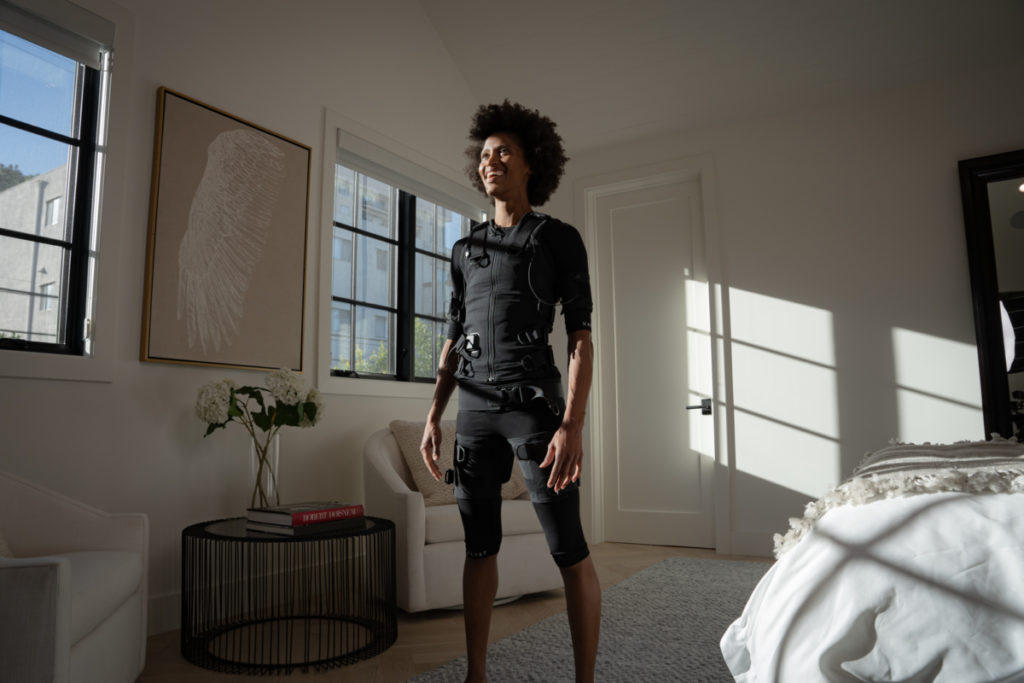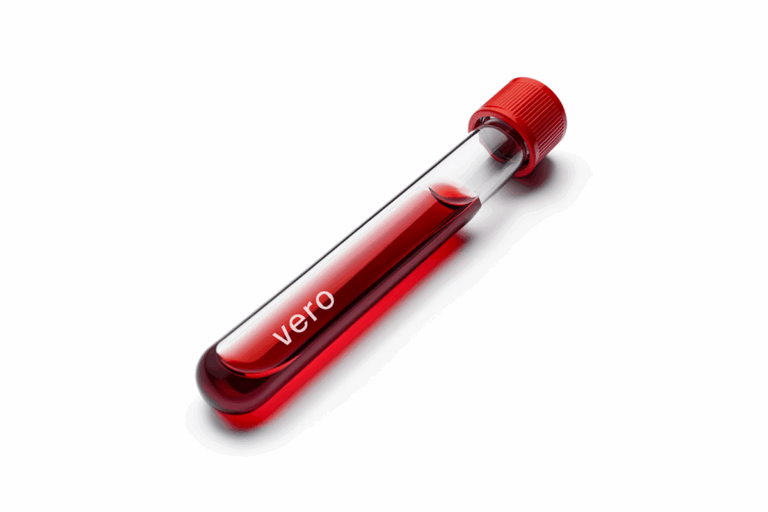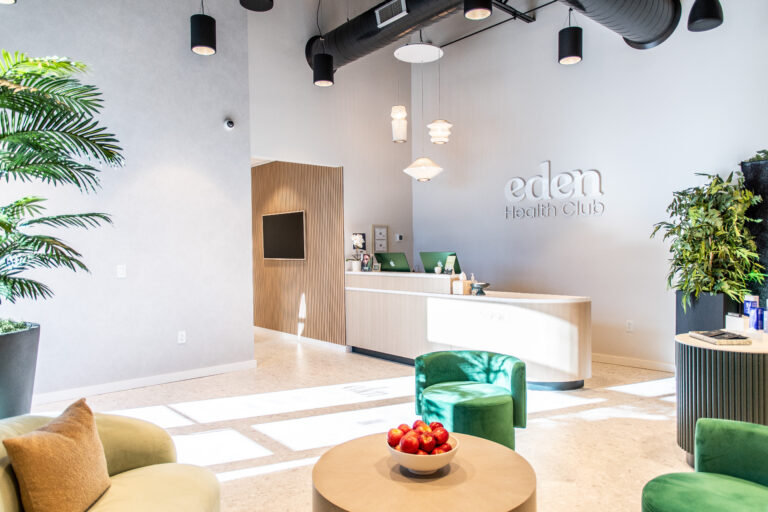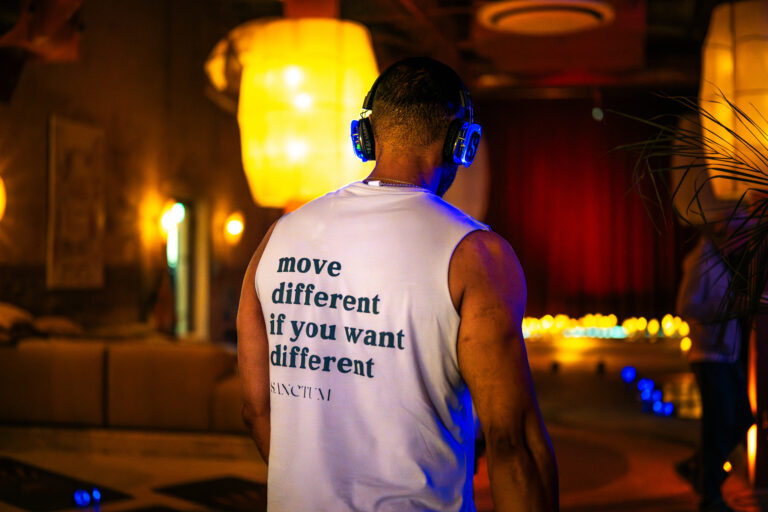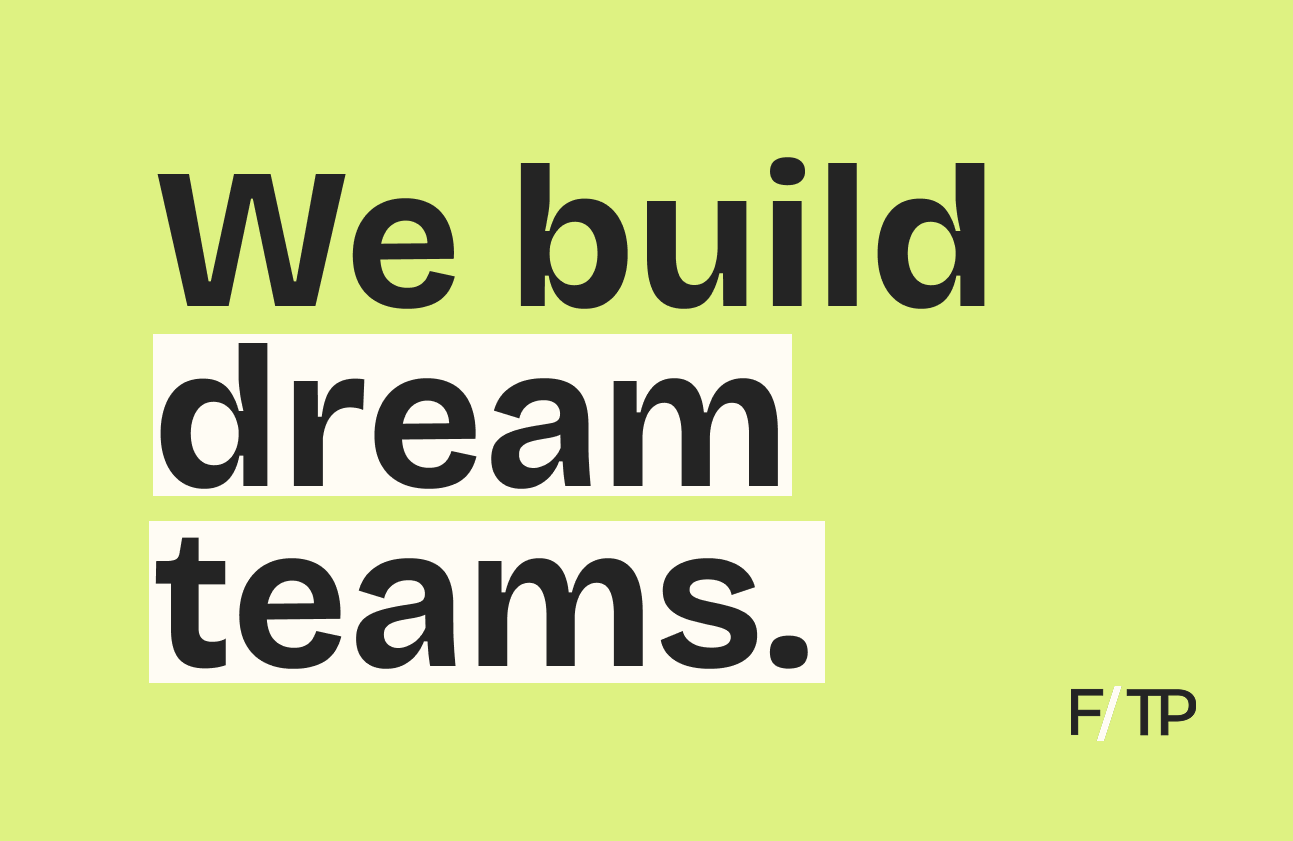In this Q&A, you’ll hear from Bjoern Woltermann, founder & CEO of Katalyst, an electrical muscle stimulation (EMS) training company. Bjoern talks about the benefits of full-body EMS for performance and well-being. We also discuss his company’s journey from boutique studio to FDA-approved consumer product.
Can you tell us about what you’re working on at Katalyst?
Bjoern Woltermann: Katalyst is a new approach to fitness that makes working out easier, faster, safer, and more effective.
Rather than heavy weights or machines, we use proven electrical muscle stimulation (EMS) technology to fully activate your muscles, delivering an unbelievable, full-body workout in just 20 minutes… without any wear and tear on your body.
Easy to use, on-demand, and travel-ready, Katalyst is the first and only product of its kind to be FDA-cleared for consumer use. In a Katalyst workout, users put on a base layer, vest, and shorts (aka “the Suit”) and are led through a series of functional movements by expert trainers via on-demand classes in our iPad app.
Throughout the workout, the Suit delivers low-frequency impulses to each major muscle group at increasing levels of intensity. These impulses imitate the basic mechanisms your brain uses to activate muscles to help you exercise efficiently and effectively.
This muscle activation, combined with the functional movements, helps build strength and muscle mass, improves speed and cardiovascular performance, supports blood flow, and accelerates recovery.
By eliminating external loads and the physical wear associated with conventional workouts, Katalyst makes health and fitness accessible to everyone, regardless of age or ability.
How did you come up with the idea? What key insight led you to pursue this opportunity?
BW: In 2012, I was a tech executive suffering from chronic back pain from spending 150 days per year on a plane. My doctor in Berlin recommended full-body EMS to strengthen my core, and although I was incredibly skeptical, I gave it a try.
After training just once per week for six weeks, I was amazed to find myself pain-free and in noticeably better shape.
My weekly training partner was a 60-year-old woman, almost twice my age at the time. Watching her get an equally intense workout without any stress on her joints helped me to realize the potential of this technology.
According to the CDC, over 70% of Americans are overweight or obese and fail minimum activity guidelines. As an industry, we’ve struggled to innovate in ways that would make fitness more accessible and empower the vast majority of our population to live longer, healthier, and happier lives.
Full-body EMS has the potential to change the statistics because it lowers the time and ability barriers to fitness while increasing the ROI of working out, improving strength, mobility, vitality, and overall health.
I’m excited for Katalyst to be a part of that.
How did you turn your idea into a company?
BW: In 2015, I was the youngest vice president of Deutsche Telekom when I informed my parents that I was giving up my career and moving continents to launch a startup in the US — you can imagine their response.
My first hire was my personal EMS trainer in Berlin to add training depth to the team. We laid the groundwork and moved to Seattle in 2017 once visas were approved, hiring some of the former Microsoft Band team to help build the first-generation product.
Once we gained our first FDA clearance for a prescription device, we opened a few studios in the Seattle area. Over the next two years, we gained a second FDA clearance, raised a seed round, and gathered customer data across 25K training sessions. But, it was clear that a premium connected home fitness device was the right use case.
So, we shifted gears and reinvented the entire product experience from the ground up. In February 2020, we received the first-ever FDA clearance for a full-body EMS device that could be sold directly to consumers, just as the world’s supply chains were grinding to a halt. We managed to run a small closed beta, hone the experience, and launch our early access program in the summer of 2021.
The response thus far has been phenomenal, with zero returns and off-the-chart customer satisfaction. We still have a long way to go, but I’m proud of the spirit in which our team pulled together despite facing countless hurdles along the way.
How big can this get? What’s the addressable market and how do you go about capturing it?
BW: A very compelling aspect of Katalyst is the number of markets we can serve and the relative size of each of those markets. Obviously, the fitness market itself is huge, as Americans spend $50B a year on gym memberships, home gym equipment, and connected fitness devices.
Even so, greater than 70% of people still fail the CDC’s physical activity guidelines, so the opportunity to improve the lives of those who never had a solution before is multiple times larger.
Zooming out, decades of scientific research has shown full-body EMS to reduce back pain, prevent sarcopenia, and even reverse osteoporosis. Numerous studies have demonstrated a positive impact on surgical outcomes such as hip and ACL replacements, muscle mass in aging populations, incontinence, and more.
One 65-year-old customer, for example, recently told us that he started using Katalyst to “prehab” for an upcoming hip replacement. Three months in, he no longer walked with a cane and his doctor called off the surgery altogether!
And while the US is the world’s largest wellness market, full-body EMS is already mainstream globally, with over 13K studio locations worldwide, including over 2.5K locations in Germany, the birthplace of EMS. Other major growth markets include China, Korea, UAE, Japan, Spain, Italy, and Brazil.
Over the next five years, we’ll leverage this technology to help more people access fitness for the first time, prevent or reverse conditions related to aging and atrophy, and extend the healthy human lifespan.
One way to capture these market opportunities is simply to make the product available in a form factor that matches the zeitgeist of our time. Historically, there were regulatory, usability, cost, hygiene, complexity, and physical location challenges that prevented full-body EMS from spreading faster. Katalyst is the first company to make this life-changing technology available at scale.
Who is the core customer? How are you acquiring customers? And how will you grow the customer base?
BW: We like to say that our core customers are people with skeletal muscles… just like the electric toothbrush is for people with teeth.
On one level, that is certainly true, but how we serve people and what they get out of Katalyst is very personal, from the 25-year-old professional athlete at the top of their game to the 75-year-old grandparent who wants to lift their grandkids.
At the moment, we’re very much in the early-adopter segment. Half of our customers are over 45 years old and tend to be high performers who want to look and feel great in the least amount of time possible. But they also may have dealt with a nagging injury for years or simply didn’t enjoy spending hours in the gym.
Since launching our early access program for users like this, word of mouth has been huge for us because Katalyst is such a new experience that people are excited to share with friends and family. We often see one person learn about us from a podcast interview and then become a catalyst (for lack of a better term) within their networks.
It’s our job to build trust by delivering a world-class experience and exceptional customer service. In fact, our support team consists entirely of personal trainers, and customers appreciate the personalized attention while we benefit from direct feedback.
Looking ahead, we’re evaluating partnerships, pop-up locations, and other ways to spread the word and allow more people to experience Katalyst.
Looking at your road map, what are some of the milestones you’re targeting over the next 3-6 months?
BW: Since achieving FDA clearance in 2020 and launching our early access program in mid-2021, we have accumulated a waitlist of 70K people, as well as demand from personal trainers and medical professionals both in the US and abroad.
This year is focused on hiring the team, scaling the supply chain, and building the brand. We’re also working to make it easier for customers to purchase Katalyst using HSA/FSA funds and will be introducing more content and app features to support a premium subscription offering in the near future.
If you’re interested in having your company featured in our Startup Q&A series, send an email to team@fitt.co.
